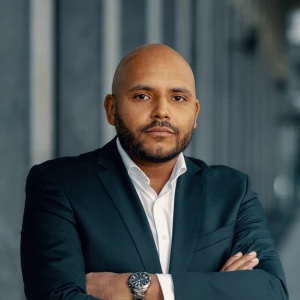Hi guys,
I have recently done a case and my interviewer told me to draw a P&L for a Gas Company located in France, with a MS of 70%.
1) My question is about how do you approach this questions and, above all, how do you add sense to this drawing in terms of numbers (it's quite difficult to me add numbers regarding revenues, COGS, transport, etc)
Is there any tip I could follow in future situations like this?
2) In the same line, when an interviewer ask about to draw a cost structure, is there any pattern/guideline you follow?
Thank you very much,
Best
Any tips when drawing a P&L and cost structure?


Hi Gerard,
I have answered below to your questions:
1) To identify P&L, you should identify revenues and costs of the company. Moreover, from what you mentioned it seems you should also estimate the size of the market and the market share in order to estimate the numbers.
- A) Revenues: according to whether the company is upstream or downstream located they would be different. At the bare minimum the interviewer should provide information on this. Hopefully he/she could also inform you on the different profitability segments to facilitate the task. If that’s not the case, segment by type of customers, distribution channels and different type of products and then try to brainstorm the potential revenues streams for each segment
- B) Costs: the easiest way to identify costs is the following:
- Structure: divide first in fix and variable costs
- Brainstorming: imagine the value chain of a typical manufacturing company that is easy for you to visualize. An example could be a producer of a toy. Then think which are all the steps present in the value chain. You could probably think, in order, about the following:
- raw material (buying the plastic for the toy),
- transport (from the producer of plastic to your factory),
- real estate production facility (to produce the toy), workers (to actually work on raw material), equipment (used to produce the toy)
- inventory (to organize the finished products)
- distribution (to bring the toy to retailers)
- marketing and sales (to sell the toy)
- customer service (to deal with issues with the toy post-sales)
Once brainstormed the costs, try to “translate” them in equivalent cost for the business you are analysing (in your case – gas industry, either upstream or downstream). Finally, brainstorm if there is any other cost typical of the specific sector you are analysing
- C) Numbers: this part may or may not be required, thus first of all clarify that with the interviewer to avoid to do something not actually requested. If required, you should first estimate the total market share with a market sizing, then use the information about 70% market share to derive the amount of revenues. Once done this, you should make an hypothesis on the profit margin, from which you can derive the actual amount of costs. Finally, you should allocate the cost in the different buckets you previously identified, using your own business acumen.
2) For what concerns deriving a cost structure, you can generally follow the structure of point 1B above
Hope this helps,
Francesco


Hi Gerard,
questions like this aim at judging your business acumen. The interviewer wants to see whether you are able to think through the focal sector/industry and derive implications for the company's business via the P&L and the cost structure.
In your example, O&G companies (especially when we talk about upstream O&G, which is the exploration part (e.g., drilling for gas)) have enormous capital cost and upfront investments, even before the first unit of Gas is extracted! This means that the P&L can be expected to contain huge accounting depreciation positions. So you should collect your thoughts around which aspects could be worth hypothesizing, and then discuss each aspect with the interviewer, guiding him through your logic.
Let me also highlight that this kind kind of question is not very common with MBB. It is usually rather asked by firms like e.g. Roland Berger.
Cheers, Sidi











